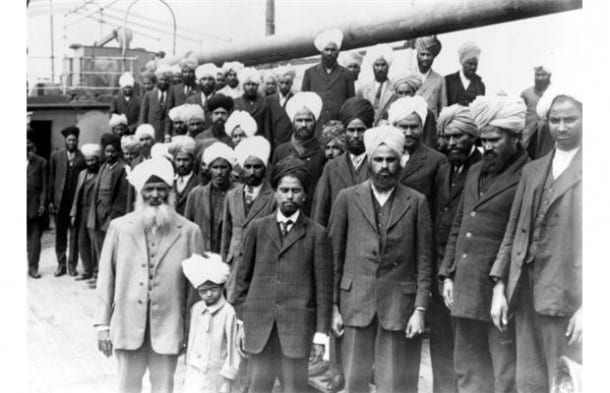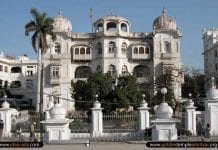VANCOUVER, BC—One hundred years ago Friday, the Komagata Maru arrived in the Burrard Inlet.



The Japanese tramp steamer carried 1,500 tons of coal, and 376 would-be immigrants from the Punjab in India. White Vancouverites were alarmed. “HINDU INVADERS NOW IN THE CITY HARBOUR ON KOMAGATA MARU,” screamed a front-page headline in The Vancouver Sun. In fact, most of the passengers were Sikh, not Hindu. But few would ever set foot on Canadian soil.
The federal government refused to let the ship land, and the ship languished in the harbor for two months. The passengers went on a hunger strike, trying to force the government to accept them. When it looked like the ship might sail to Japan, they seized the vessel from its Japanese crew. The government didn’t blink. Eventually it sent a warship, the HMCS Rainbow, to force the ship to leave. Thousands of Vancouverites lined the shores of Coal Harbour anticipating a battle, but the Komagata Maru sailed away peacefully July 21. Unfortunately, the voyage didn’t end peacefully.
When the ship reached Budge Budge, near Calcutta, police opened fire and 19 passengers were killed. A century later, the Komagata Maru episode is viewed as one of the most infamous examples of racism in Canadian history. “It seems to me to be a defining moment in the history of the South Asian community, and the history of Canada,” said Ujjal Dosanjh, who became Canada’s first South Asian premier in 2000. “The enormity of the event touches you, it grips you when you think about 376 people waiting on that ship for two months and then being sent back, under the shadow of the HMCS Rainbow.”
The British were leery of the passengers on the Komagata Maru because they thought they were connected with the Ghadar Party, which promoted India’s independence. “The British were now afraid that these people were now radicalized to the extent they could pose a danger to the stability of the Punjab region,” said Dosanjh. “And that’s why they were welcomed with guns. So in India, it’s a very important chapter in the independence movement.”
The fears of many white Canadians of the era are summed up in a John Innes cartoon that ran in The Sun June 26, 1914, titled “Will The Dyke Hold?” In this case, the dike was Canada’s immigration laws, which stood between Canada and a tsunami labelled “Flood of Oriental Labor.” If you look closely, the crest of the tsunami looks like an angry man in a turban. The Canadian side of the dike reads “Population 8,000,0000;” the “Oriental” side reads “300,000,000.”
Immigration to British Columbia surged after 1900 — Vancouver’s population went from 27,000 in 1901, to 100,000 in 1911. But there was tension over Asian immigration. “Canada was seen as a white man’s country,” explains Ali Kazami, author of Undesirables: White Canada and the Komagata Maru (Douglas and MacIntyre, 2012). “(That lasted) pretty much from Confederation until 1967. If you look at the immigration pattern, that bears it out,” Kazami said in an interview.




